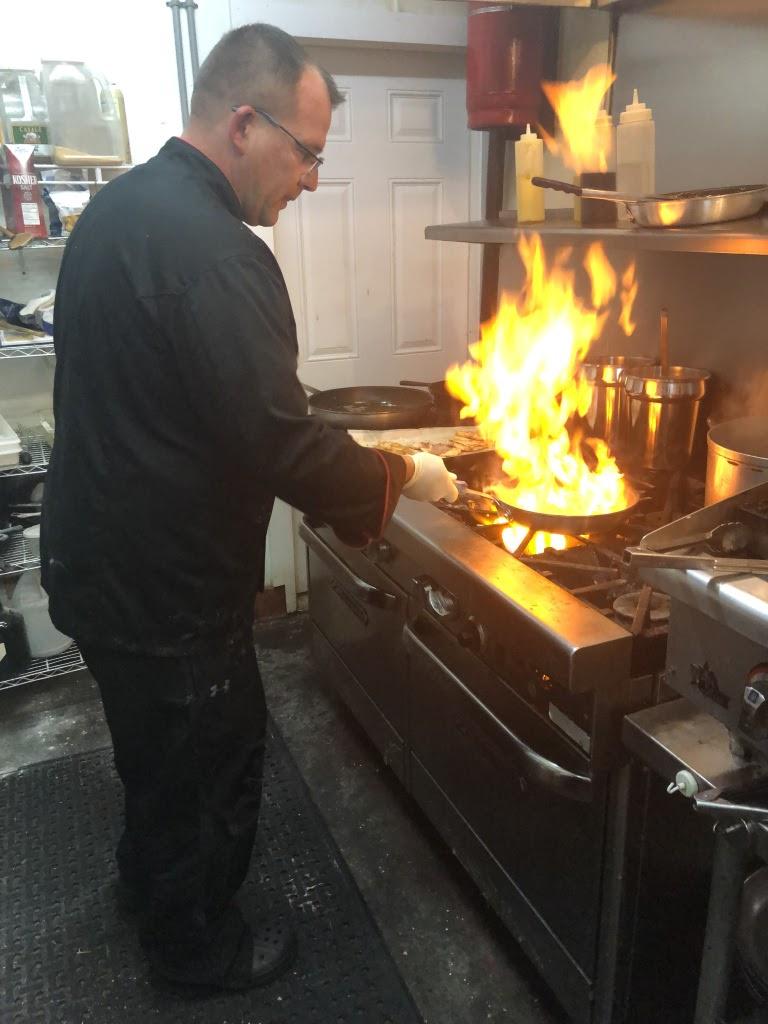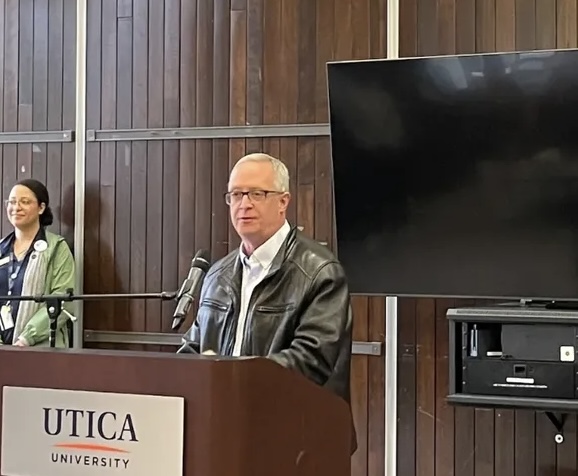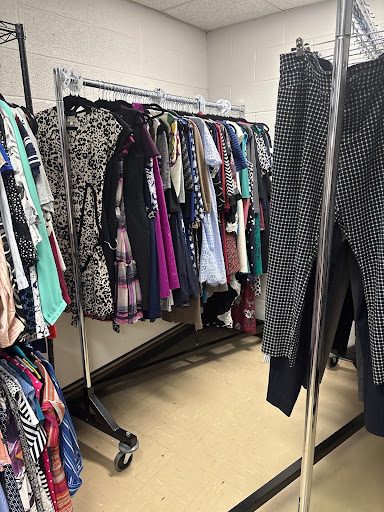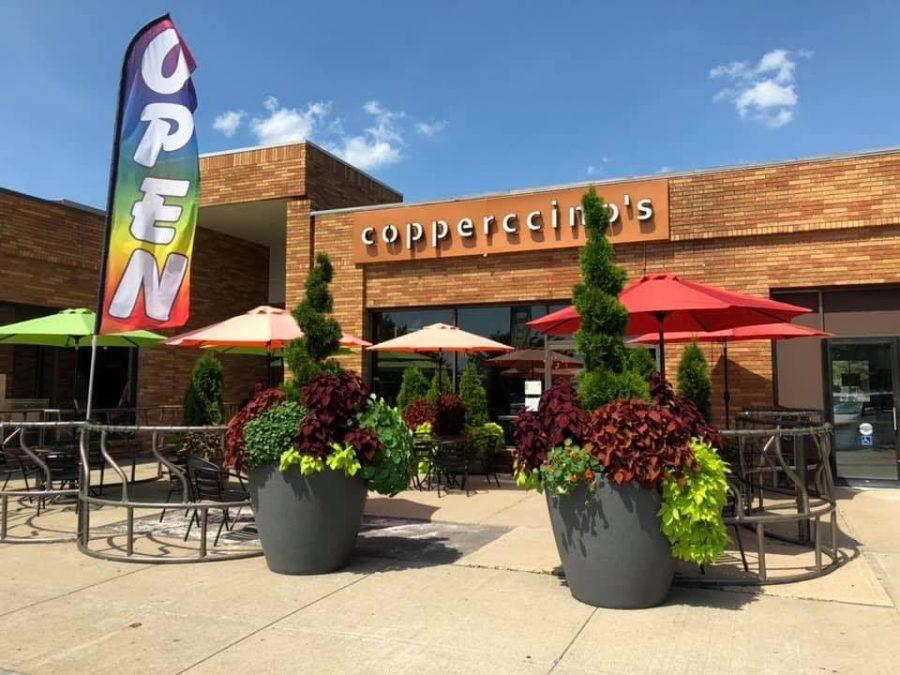A tale of resilience: Some Utica area food sources narrowly survive COVID-19’s wrath
November 12, 2020
March 16 was a dark day for many Mohawk Valley business owners. New York State restaurants were forced to suspend in-person dining, and while schools and colleges shifted to remote learning, a large disruption in the area’s food ecosystem began.
Food culture is a big part of the Mohawk Valley’s identity and the disruption set off an air of uncertainty for some businesses and a boom for others. A network of local businesses fuel the area’s supply chain, making farm-to-table dining an enjoyable experience at several local restaurants. Restaurants and farms experienced varying levels of impact, but most found ways to survive during the worst part of the economic shutdown from March to May.
Wendi Skwara, co-owner of MAWS Farm in Newport, was already in the thick of normal spring preparations when the pandemic first struck and then became inundated with customers and phone calls from local residents who wanted to stock up on goods.
“We wanted to try to satisfy everyone and get the things they wanted off of the farm, but it was at an amazing pace,” Skwara said. “Everyone wanted a 50 pound bag of potatoes and everyone wanted to fill their freezer with meat.”
This frenzy for having necessities in the home caused a direct negative impact in another part of the food ecosystem: restaurants.
In the Sustaining Utica multimedia project, Utica College journalism students examined how this food chain was affected. A common thread was found and weaved throughout the project: The Mohawk Valley rallies around each other to help small businesses to stay afloat. However, businesses were forced to adapt and change business models to stay alive. Eight months later, many businesses are slowly recovering and back to serving their clientele.
A Stinging Impact

David Amidon and Michael Brown, co-owners of Copperccino’s Coffee House in Rome, have experienced first hand the troubles caused by the pandemic. Both Amidon and Brown knew that if they had shut down because of COVID-19, it would have been very likely that they would have never reopened.
“At the beginning of the pandemic it felt like we were drowning,” Brown said. “We started hearing about the PPP (Payment Protection Program), the U.S. Small Business Administration, loan programs and grants and things like that. Because writing grants and accessing money from government entities is something I have done in the past, I was all over that.”
According to a recent survey by the New York State Restaurant Association:
- 63.6% of restaurants said they are likely or somewhat likely to close by the end of the year without some form of financial relief
- 36.4% said they are likely or somewhat likely to remain open; and of those who are likely to close, 54.8% will be forced to shut their doors by the end of the year
In April, just one month after the pandemic struck, the NYSRA found that 80% of New York’s restaurant workforce had been laid off or furloughed since the beginning of March, totaling 527,000 affected jobs in New York State.
In order to survive a global pandemic, change was needed. Many of the restaurants that shut down due to COVID-19 had to make changes so they could reopen effectively and efficiently.
Copperccino’s was also one of the few businesses that was forced to stay open during the pandemic in order to stay alive. Brown and Amidon said they made several adjustments to prevent themselves from shutting down permanently.
One adjustment Copperccino’s made was drastically cutting back on their hours. Instead of being open seven days a week for the majority of the day, Brown and Amidon have shifted towards a Wednesday to Sunday schedule, where they are open between 10 a.m. and 4 p.m.
“We tried to stay open as much as we could but it just about killed us,” Brown said. “We pulled our hours in and tweaked it so we could hit our sweet spot under these circumstances. We are very happy where we are currently.”
Making Hard Decisions

Most of the businesses and entrepreneurs involved with this project are slowly rebounding. Matt Grabski, who owns two dining establishments in Utica, Outta The Way Cafe’ Downtown and Joey’s 307 faced a tough call as a second wave of the coronavirus trickles in Oneida County. Both of these businesses are relatively new to Grabski as he opened up Outta The Way Cafe’ Downtown two years ago and Joey’s 307 last year.
Grabski said the uncertainty of what lies ahead and the strain of operating two restaurants made him decide to close Outta the Way Cafe on Nov. 6. He will focus on expanding the menu at Joey’s 307 and will start offering a lunch menu in addition to his dinner menu.
“When COVID-19 hit we basically had to restructure our entire train of thought so we could know how to overcome this and keep things going,” Grabski said. “The two weeks where we shut everything down sucked because we had nothing coming in.”
Grabski then added plans to keep efforts in one location to benefit the customers.
“With limited and capable staff available it has become just too much to take on both locations and with the quality of our service at stake, it was decided to consolidate our efforts into one location to provide the absolute best service to better our wonderful customers.”








































































































































